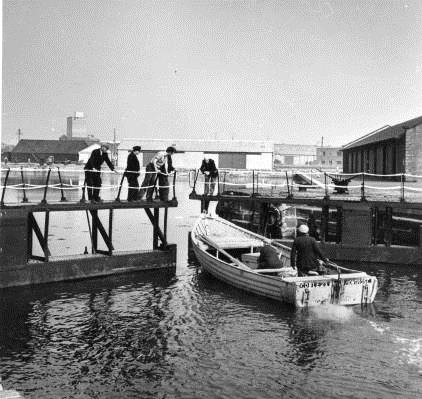The port has a long and fascinating history. It is believed Montrose has engaged in seaborne trade since at least the creation of the royal burgh of Montrose in the 12th century. Today it is a thriving, modern port providing a service hub for the North Sea energy industry and general cargo.
The picture panels within the fence, running from the Lifeboat Station in Wharf Street into Hill Street and then into River Street have been selected to reflect some of the activities at the port over the years. They are part of the Montrose South regeneration project led by Angus Council.













